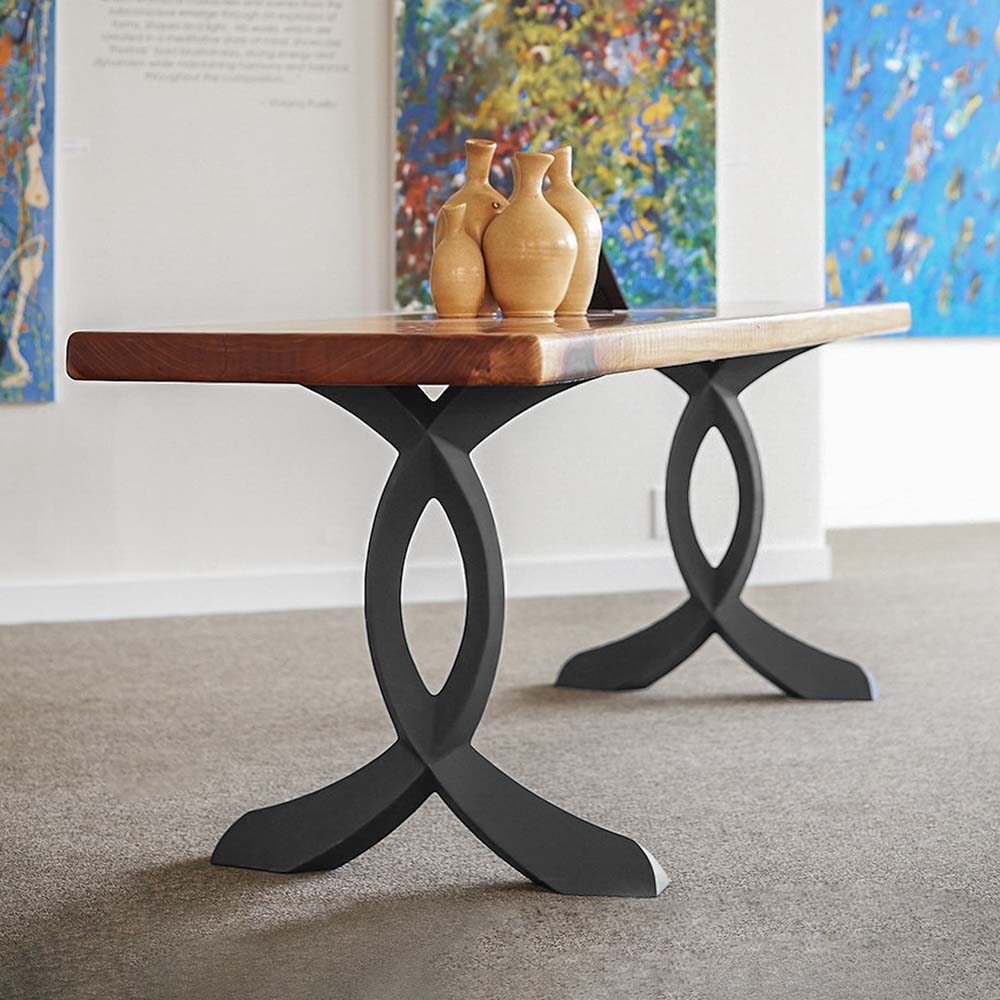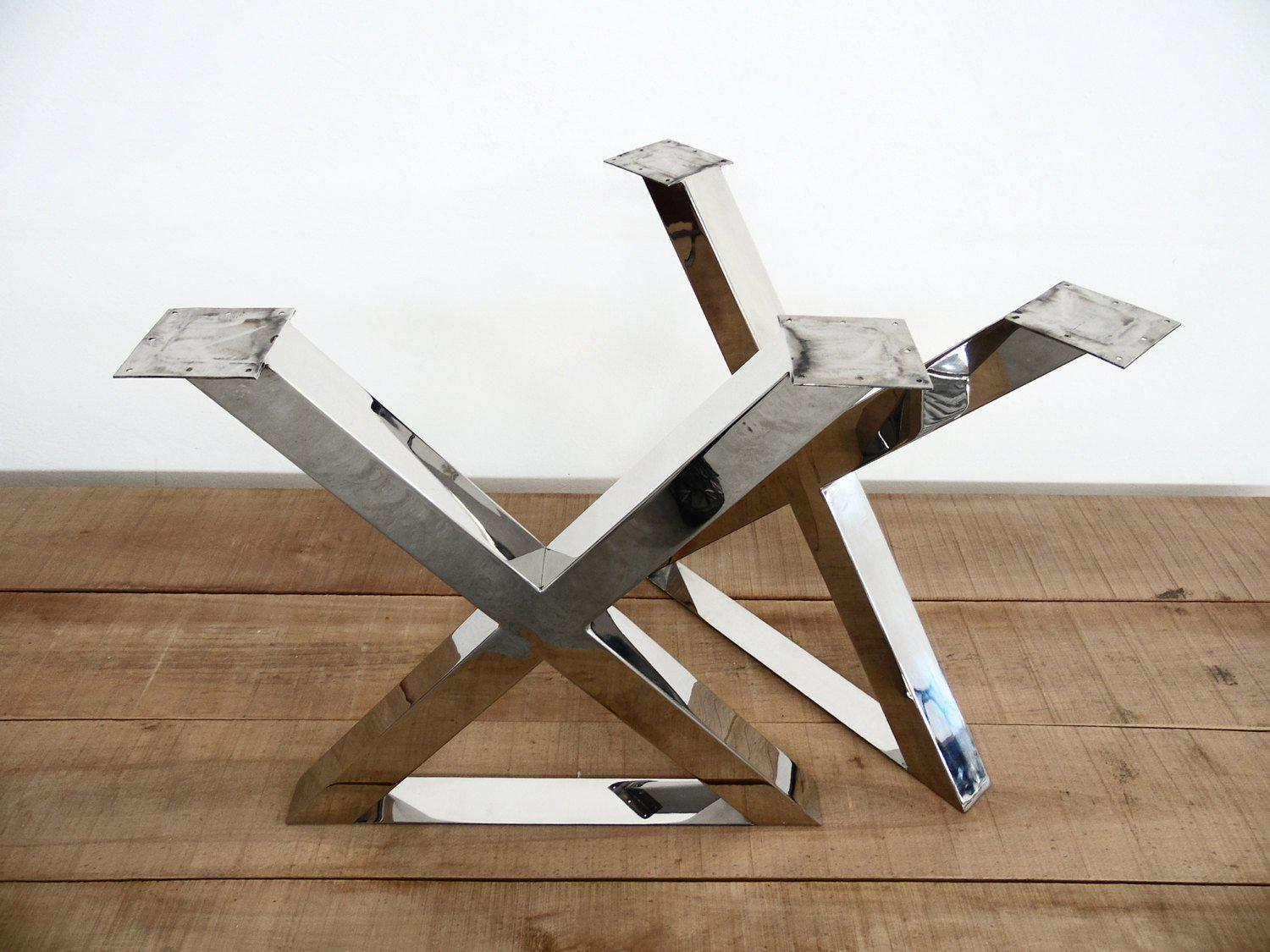Distinct Dining Room Table Legs to Change Your Eating Area
Distinct Dining Room Table Legs to Change Your Eating Area
Blog Article
An In-depth Consider Table Leg Styles: Discovering the Perfect Match
Selecting the best eating table leg style is critical for both aesthetic appeal and useful capability. For those with bigger tables, trestle legs guarantee strong assistance, whereas hairpin legs introduce a mid-century modern vibe with their minimal style. The x-shaped legs mix modern style with enhanced stability.
Standard Four Legs
Among the numerous types of dining table leg styles, the typical four-leg style continues to be an ageless selection for numerous families. 4 legs offer well balanced assistance, making sure the table continues to be steady and capable of birthing significant weight (dining room table legs).
From an aesthetic viewpoint, the traditional four-leg layout can be easily adjusted to different interior designs. Whether crafted from timber, metal, or a combination of materials, these legs can be delicately sculpted, sleek and minimalistic, or anything in between. Their flexibility enables them to enhance both rustic and contemporary settings effortlessly.
Moreover, the simple framework of the four-leg style facilitates simplicity of motion and placement within a room. Unlike even more facility bases, this design decreases blockages, providing sufficient legroom for restaurants. In summary, the conventional four-leg dining table leg design weds sustaining elegance with sensible capability, making it an astute selection for those looking for both kind and function in their eating furnishings.
Stand Base
Typically commemorated for its classy and space-efficient design, the pedestal base is a prominent choice to the standard four-leg arrangement in dining table leg styles. This distinct base normally includes a single main column sustaining the tabletop, which can differ in kind, from ornately sculpted wood to streamlined, modern steel. One of the key benefits of the stand base is its capacity to make the most of legroom and seating flexibility. Without edge legs, diners are managed greater liberty of activity, making it an optimal option for round and oval tables that advertise even more intimate and comprehensive events.
The main column itself supplies a canvas for intricate styles and artistic expressions, adding an element of visual interest under the table. In recap, the pedestal base integrates performance with design, making it a fine-tuned and sensible choice for varied eating atmospheres.
Trestle Legs
Trestle legs provide a durable and classic structure for eating tables, defined by their straight cross-bracing and tough support beam of lights. Originating from middle ages times, this style has evolved yet preserved its important structure, making it a perennial fave in both standard and modern setups. The main trestle beam, my website commonly sustained by two or more vertical posts, supplies phenomenal security, permitting bigger table sizes without the requirement for additional legs.
A look at here significant advantage of trestle leg tables is the sufficient legroom they supply. Unlike tables with four corner legs, the lack of blockages at the table's edges offers unobstructed space for chairs and diners, enhancing comfort and ease of access. This makes trestle tables ideal for fitting bigger gatherings, whether in a dining-room or a banquet hall.
The aesthetic adaptability of trestle legs is notable. Readily available in a selection of materials such as timber, metal, and composite, they can be ended up to match a large range of indoor designs. From rustic farmhouse to sleek modern designs, trestle legs can be tailored to match specific preferences. Their enduring charm and functional advantages make trestle legs an engaging selection for those seeking both design and functionality in their dining table.
Barrette Legs

The charm of barrette legs exists in their simplicity and flexibility - dining room table legs. Available in a variety of materials, including steel and brass, they can be ended up in various shades to enhance different interior styles. Whether coupled with a rustic wooden table top or a modern glass surface area, barrette legs effortlessly blend functionality with a touch of vintage beauty
Longevity is one more notable function of barrette legs. Despite their delicate appearance, these legs are crafted to birth significant weight, making sure the table continues to be secure and secure. Furthermore, they are fairly simple to set up, making them a prominent selection for do it yourself fanatics and professional furnishings makers alike.
X-Shaped Legs

Created from materials such as steel, wood, or a combination of both, X-shaped legs can be customized to match different style preferences. Steel legs typically lend a sleek and commercial feel, ideal for loft-style apartment or condos and contemporary dining areas. On the various other hand, wooden X-shaped legs supply a warmer, a lot more rustic appeal, ideal for farmhouse or eclectic interiors. The versatility in products allows house owners to personalize their table to much better fit their general Your Domain Name design plan.
Furthermore, the design behind X-shaped legs guarantees also weight circulation, decreasing the danger of tottering and boosting durability. This makes them especially well-suited for larger eating tables that call for extra assistance. Essentially, X-shaped legs mix useful engineering with contemporary looks, making them an ageless choice for diverse dining settings.
Final Thought
An extensive understanding of eating table leg designs exposes the distinct features and advantages of each layout. Traditional four legs provide security and timeless charm, while stand bases supply legroom and a structured look. Trestle legs make certain durable support for larger tables, and hairpin legs present a mid-century modern visual. X-shaped legs integrate contemporary style with enhanced stability. Choosing the appropriate leg design guarantees both practical and aesthetic satisfaction in any kind of eating space.
Report this page